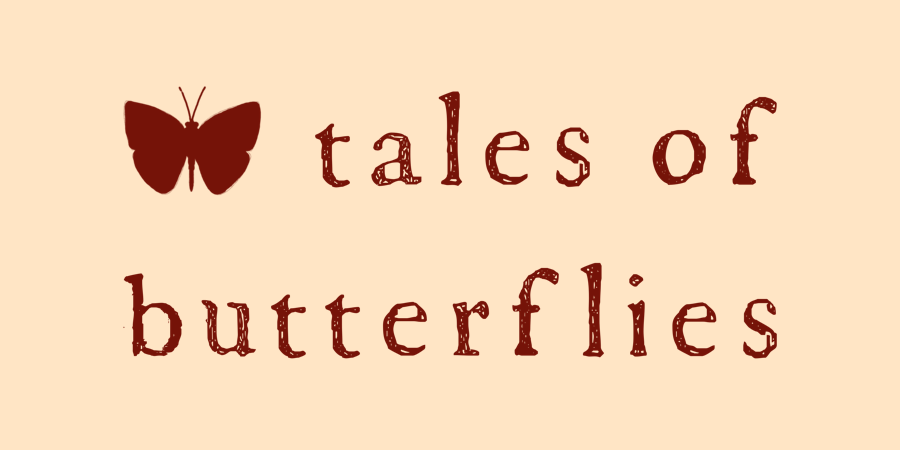
Crochet Embroidered Sampler: How To Embroider On Crochet Part 4 – Fly Stitch Skeleton Leaves
Way to go, we’ve made it to Part 4 of the Crochet Embroidered Sampler series! In Part 3 we added our embroidered Wagon Wheel/Spider Web Roses. Today, we’ll move on to our third sampler section – skeleton leaves made with the embroidery fly stitch and French knot “polka dots.”
Crochet Embroidered Sampler: Fly Stitch Skeleton Leaves
As mentioned in the previous posts – In the same way that you could use a variety of yarn sizes to make the crocheted base, you can also experiment with the type of thread or yarn you use to make the embroidery. For the sampler version here I just used DMC embroidery thread, but you could easily use scrap yarn or crochet thread as well. The size of yarn or thread used will effect the thickness of your embroidery stitches.
We will be working into the moss stitch/lemon peel stitch section of the crocheted sampler (the bottom section).
A note on embroidery hoops:
For the most part, I don’t use them. When using an embroidery hoop for traditional embroidery on regular fabric, a hoop helps pull the fabric taught to make working embroidery stitches into it easier. When embroidering on crocheted fabric, we don’t want to pull the fabric taught as it can make the embroidery stitches wonky when released from the hoop. I typically do my crochet embroidery at a table/flat surface so that I can keep the crocheted fabric generally flat while lifting only the section I’m working on using my hands. If I do use a hoop, I don’t stretch the crocheted fabric with it, but simply use it to keep a wide surface area of the fabric flat.
Supplies Needed:
embroidery thread (or yarn as mentioned above)
large embroidery needle or darning needle if using thicker yarn
small embroidery snips or scissors
How To Embroider Fly Stitch Skeleton Leaves:
Before we begin, we need to secure our thread on the back of the sampler. Make sure when securing thread that you only work into the back of the crocheted fabric, and not through to the front.
As with working all embroidery stitches on crochet, when making a fly stitch it’s important to work the thread into denser parts of the crocheted fabric. meaning into stitches and not gaps or holes between stitches. This is especially important with skeleton leaves in order to help them keep their shape. See example of this below.
For this section, alternate skeleton leaves as shown above. The final number of leaves on your sampler may differ from the amount shown in the sampler here depending on the size of yarn used in the crocheted base and the size of your fly stitches.
Here is a close up to show the placement of stitches into the shell stitch fabric.
Carry the thread between leaves on the back of the sampler by running it through two or three back loops of crochet stitches as you lead the thread toward the placement of the next leaf. Try to lead the thread behind dense areas of crochet stitching so that it can’t be seen through to the front.
Make sure you carry the thread under back loops of crochet shells only, not through to the front of the sampler.
Adding French Knot Polka Dots:
Alternate French knots opposite skeleton leaves. Carry the thread between French knots in the same way you did for the leaves.
1 – 3 French knots can be added to the center of each wagon wheel rose. I join and fasten off for each rose, not carrying the the thread between each rose.
A note on helping keep French knots from getting pulled to the back of the fabric: When I get to the point where I have just barely brought the point of the needle back down in the center of the French knot to where it’s just poking out on the backside of the fabric, I use the pointer and middle finger of my hand that’s not pulling the needle through to give extra support to the crocheted fabric by placing one on each side of the needle on the back, against the crocheted fabric. I do this even if I’m using an embroidery hoop to hold the fabric (see note at beginning of post.)
Also, pay attention to your French knot as you pull thread through to the back, going slowly, so you don’t accidentally pull it too far into the crocheted fabric. You want it to sit on top of the fabric, not be pulled into it.
And that’s it! The third embroidered sampler section is finished! There’s only one section left before it’s time to finish up our sampler and make it ready to hang on the wall! If you have any questions, leave them in the comments or shoot me an email to minwaters23@yahoo.com. Links to all posts in the series will be added here as they are uploaded.
Part 1: Crocheting The Sampler Base
Part 2: Backstitch & Chain Stitch Vine & Leaves
Part 3: Wagon Wheel Roses
Part 4: Fly Stitch Skeleton Leaves
Part 5: Lazy Daisies
Part 6: Finishing Touches
This post contains a few affiliate links. Find out more about that here.














